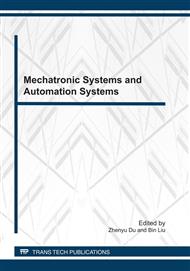[1]
Jun Liu, Licheng Sheng , et al. LCC Resonant Converter Operating under Discontinuous Resonant Current Mode in High Voltage, High Power and High Frequency Applications[C]. APEC2009, Twenty-Fourth Annual IEEE. 2009: 1482-1486.
DOI: 10.1109/apec.2009.4802862
Google Scholar
[2]
Heqing Zhong, Zhixin Xu, Xudong Zou, el al. Current Characteristic of High Voltage Capacitor charging Power Supply Using a Series Resonant Topology[C]. in Conference Proceedings of IECON'03, vol. 1, pp.373-377, 2-6 November. (2003).
DOI: 10.1109/iecon.2003.1280009
Google Scholar
[3]
Soeiro Thiago, Biela Jürgen, et al. Optimal Design of Resonant Converter for Electrostatic Precipitators[C]. APEC 2010, Twenty-Fifth Annual IEEE, 2010: 2294-2301.
DOI: 10.1109/ipec.2010.5543691
Google Scholar
[4]
Ivensky Gregory, Kats Arkadiy, et al. An RC load model of parallel and series-parallel resonant DC-DC converters with capacitive output filter [J]. IEEE Transactions on Power Electronics, 1999, 14(3): 515-521.
DOI: 10.1109/63.761695
Google Scholar
[5]
Forsyth Andrew J, Ward Gillian A, and Mollov Stefan V. Extended fundamental frequency analysis of the LCC Resonant converter [J]. IEEE Transactions on Power Electronics, 2003, 18(6): 1286-1291.
DOI: 10.1109/tpel.2003.818826
Google Scholar
[6]
Bhat Ashoka K.S. Analysis and Design of a Series-Parallel Resonant Converter with Capacitive Output Filter [J]. IEEE Transactions on Industry Applications, 1991,27(3):523-530.
DOI: 10.1109/28.81837
Google Scholar
[7]
Batarseh I, Lie R, el al. Theoretical and Experimental Studies of the LCC Type Parallel Resonant Converter [J]. IEEE Transactions on Power Electonics, 1990, 5(2):140-150.
DOI: 10.1109/63.53151
Google Scholar
[8]
R. Oruganti and F.C. Lee, Resonant power processors: Part Ⅰ-State plane analysis[C]. IEEE-IAS Annual Meeting, 1984: 860-867.
Google Scholar
[9]
Man K.F. Genetic algorithms: concepts and applications[J]. IEEE Transactions on Industry Applications, 1996,43(5):519-534.
Google Scholar
[10]
Vasconcelos J. A, Ramirez J. A K, et al. Improvements in genetic algorithms[J]. IEEE Transactions on Magnetics, 2001,37(5):3414-3417.
Google Scholar
[11]
Batarseh I, Megalemos C, el al. Small signal analysis of the LCC-type parallel resonant converter[J]. IEEE Transactions on Aerospace and Electronic system, 1996,32(2):702-713.
DOI: 10.1109/7.489513
Google Scholar
[12]
R. Oruganti and F.C. Lee, Resonant power processors: Part Ⅱ-Methods of control [J]. IEEE Transactions on Industry Applications, 1985, 21(6): 1461-1471.
DOI: 10.1109/tia.1985.349603
Google Scholar
[13]
Chen H, Sng E.K. K, and Tseng K.J. Generalized optimal trajectory control for closed loop control of series-parallel resonant converter[C]. 35th Annual IEEE Power Electronics Specialists Conference, 2004, 4: 1786-1791.
DOI: 10.1109/pesc.2004.1355386
Google Scholar
[14]
Chen H, and Tseng K.J. Optimal trajectory switching control for series-parallel resonant converter[C]. IEEE IECON, Nov. 2003, 2: 1986-(1991).
Google Scholar


